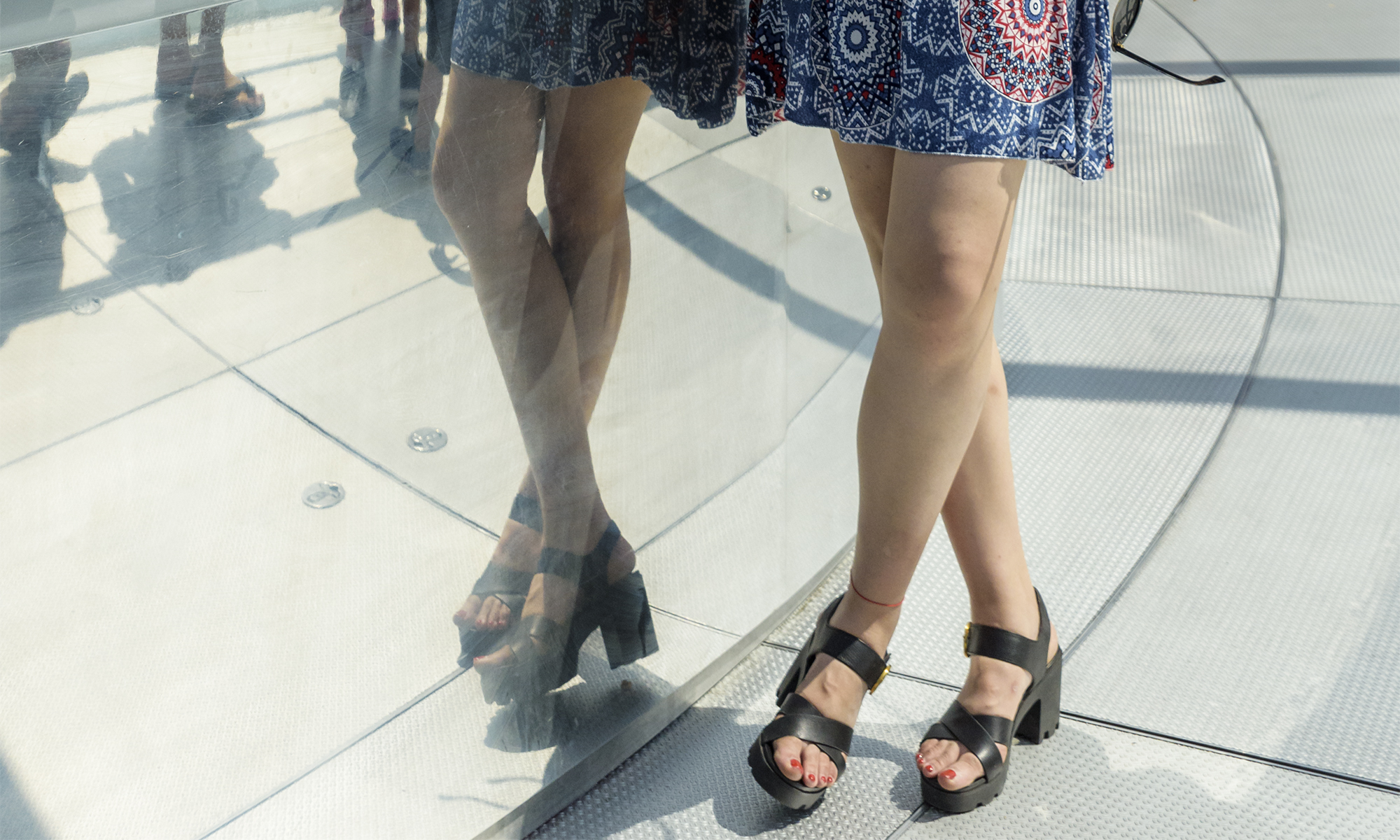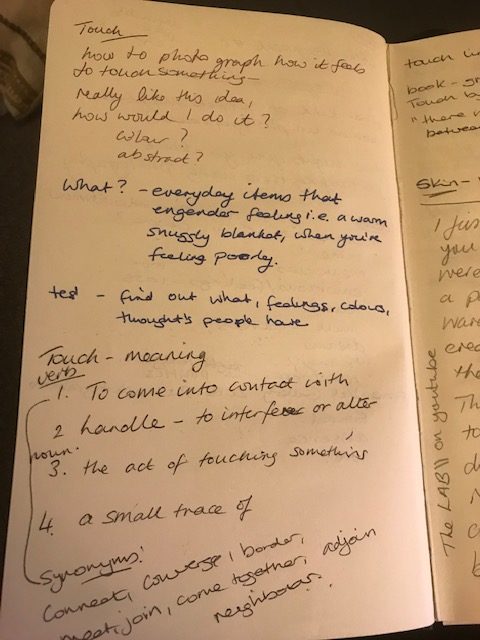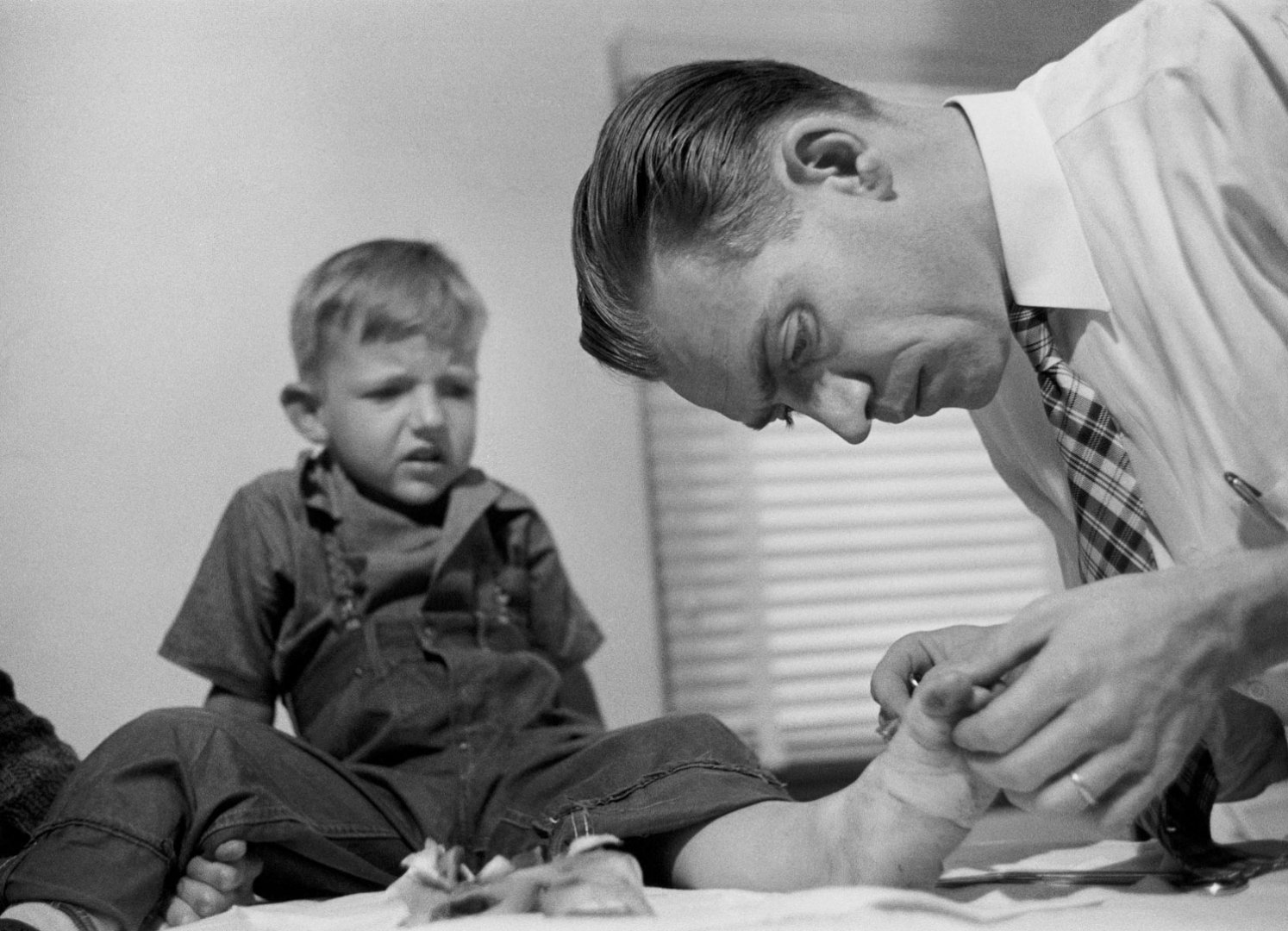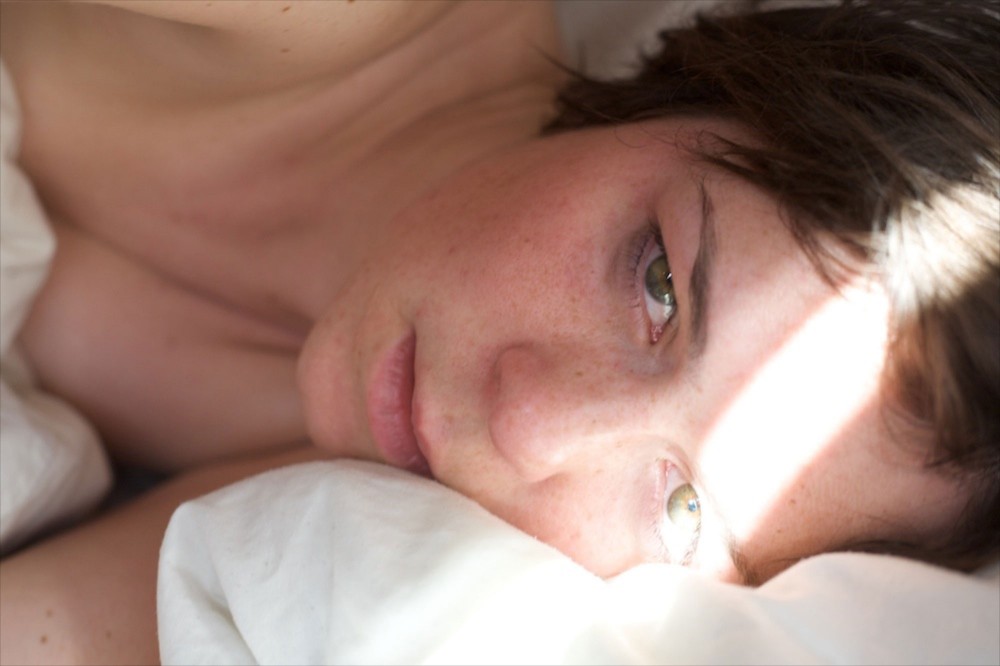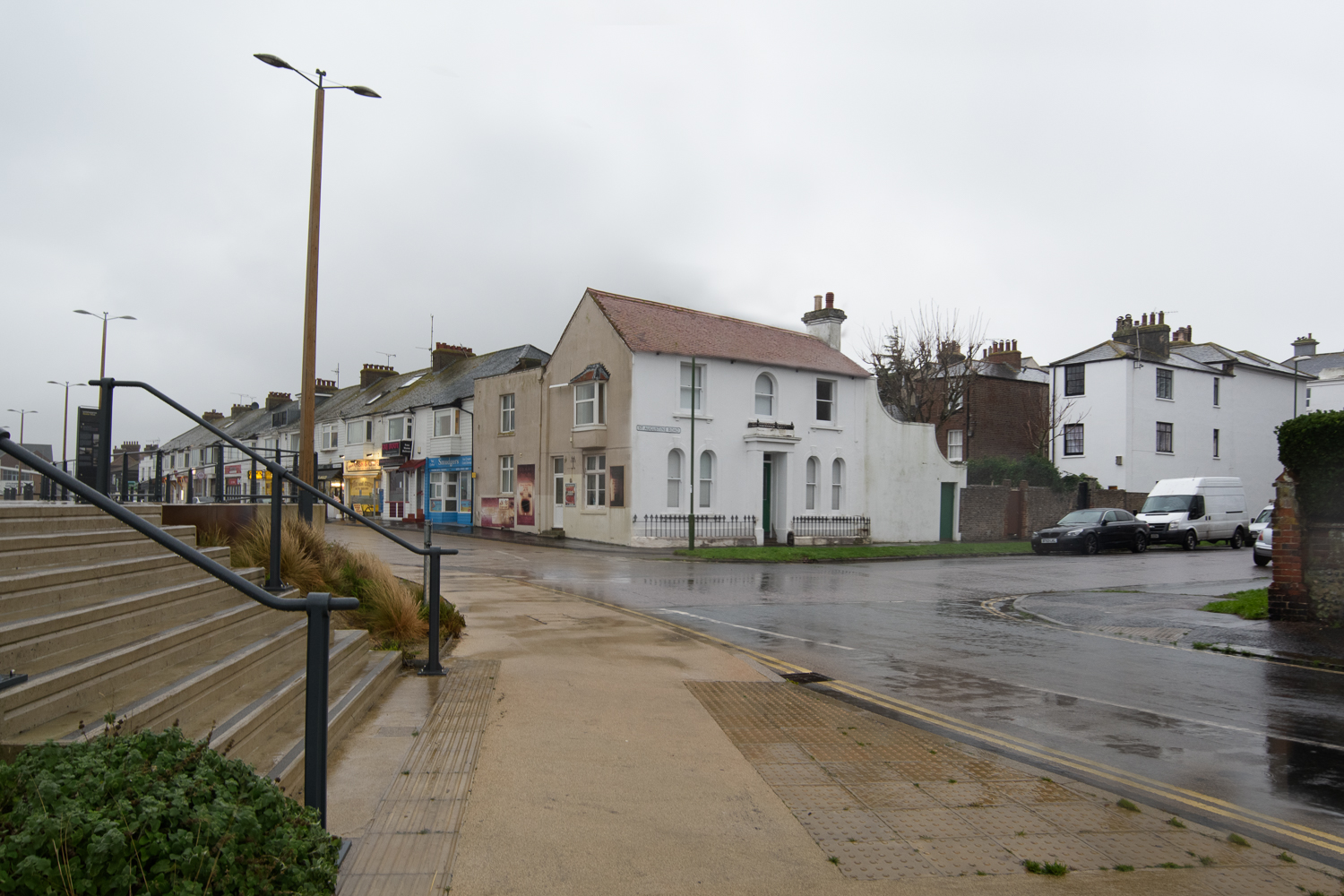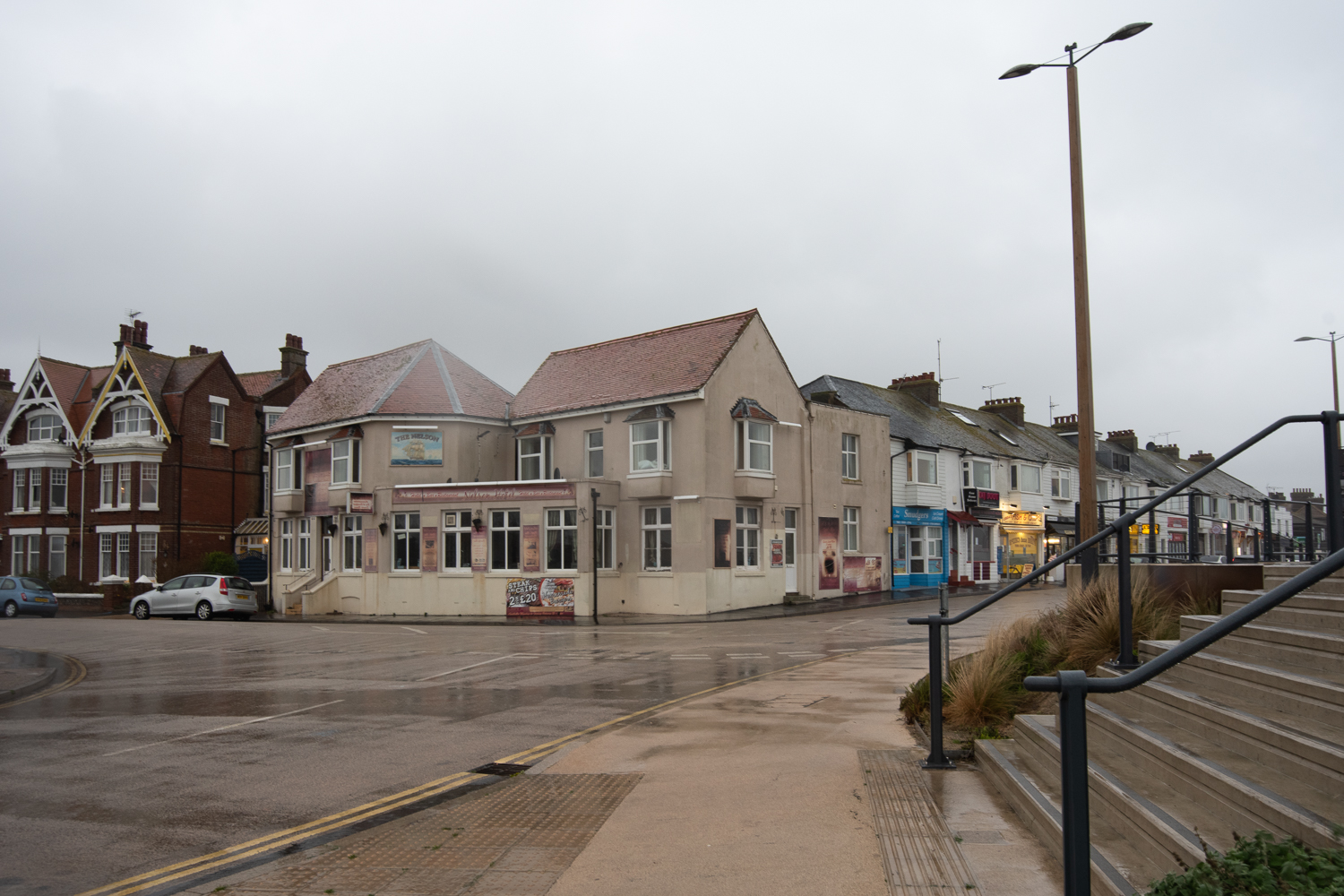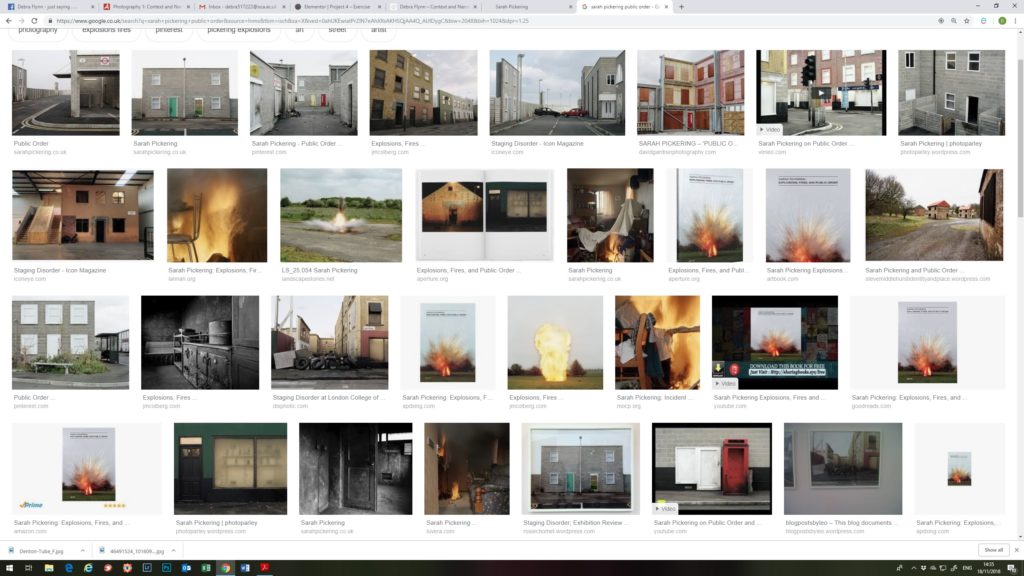I have decided to concentrate on the idea of exploring how to photograph how it feels to touch something. The idea is to create an image that is inspired by the item rather than the item itself.
In order to really experience the touch of the item, I feel that I need to eliminate sight from the reality. To that end I am going to work to the following methodology.
- I will ask 7 – 10 people to participate in this assignment with me (the thinking behind this is that I will get objects that I don’t know and therefore won’t be influenced by what they look like)
- I will be blindfolded and won’t see the item at all
- The participant will be asked to take a photo of the item and a photo of me handling it, but won’t let me see the item. They will also write a paragraph about the item, and why they chose it.
- I’ll handle the object for no more than 5 mins
- I will record my comments during the touching sessions so I can make notes afterwards.
- The object will be removed immediately, so I don’t see it.
- Following this I will create an image based on my feelings of touching the object, which will include colour, state, feelings etc.
- I won’t see any of the objects until after all images are complete. (my husband has agreed to collect the images of the items and me handling them and keep them save until the assignment is finished)
- Each image must be finished before attempting the next item (I think this is necessary so that individual images aren’t influenced by other items)
I will use this methodology with the first item as a test, it may need to be amended based on my findings, but this feels like a good place to start
The brief for participants can be read here
